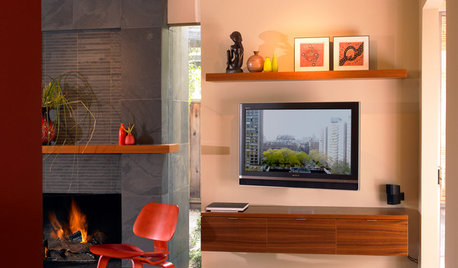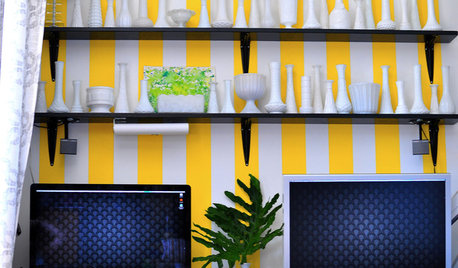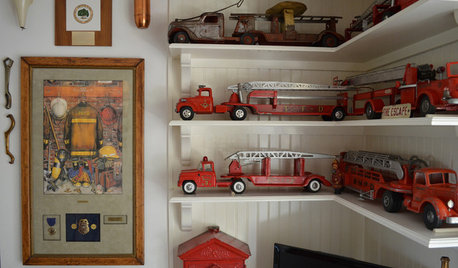Help with Wire 'Looping' inside a box
scottys
13 years ago
Related Stories

DECORATING GUIDESDecorate With Intention: Helping Your TV Blend In
Somewhere between hiding the tube in a cabinet and letting it rule the room are these 11 creative solutions
Full Story
SMALL SPACESDownsizing Help: Storage Solutions for Small Spaces
Look under, over and inside to find places for everything you need to keep
Full Story
ACCESSORIESHow to Hide Those Messy Wires
Untangle Yourself From Ugly Electrical Cords With a Few Tricks and Accessories
Full Story
DIY PROJECTSHide All Those Wires in a DIY Charging Station
Keep your gadgets handy and charged with a flexible storage board you can design yourself
Full Story
DECORATING GUIDESHouzz Call: What Home Collections Help You Feel Like a Kid Again?
Whether candy dispensers bring back sweet memories or toys take you back to childhood, we'd like to see your youthful collections
Full Story
ORGANIZINGDo It for the Kids! A Few Routines Help a Home Run More Smoothly
Not a Naturally Organized person? These tips can help you tackle the onslaught of papers, meals, laundry — and even help you find your keys
Full Story
ARCHITECTUREHouse-Hunting Help: If You Could Pick Your Home Style ...
Love an open layout? Steer clear of Victorians. Hate stairs? Sidle up to a ranch. Whatever home you're looking for, this guide can help
Full Story
SELLING YOUR HOUSE10 Tricks to Help Your Bathroom Sell Your House
As with the kitchen, the bathroom is always a high priority for home buyers. Here’s how to showcase your bathroom so it looks its best
Full Story
PETSHow to Help Your Dog Be a Good Neighbor
Good fences certainly help, but be sure to introduce your pup to the neighbors and check in from time to time
Full Story
PETS6 Ways to Help Your Dog and Landscape Play Nicely Together
Keep your prized plantings intact and your dog happy too, with this wisdom from an expert gardener and dog guardian
Full StoryMore Discussions








hendricus
joed
Related Professionals
Bell General Contractors · Coos Bay General Contractors · Galveston General Contractors · Genesee General Contractors · Hayward General Contractors · Mount Holly General Contractors · Pepper Pike General Contractors · Villa Park General Contractors · Winton General Contractors · Hillcrest Heights Handyman · Chanhassen Solar Energy Systems · Torrington Solar Energy Systems · Coral Terrace Home Automation & Home Media · Ocala Home Automation & Home Media · Temecula Home Automation & Home Mediarandy427
brickeyee
hendricus
scottysOriginal Author
manhattan42
brickeyee
manhattan42
DavidR
manhattan42
normel
brickeyee
saltcedar
manhattan42
fixizin
hendricus
brickeyee
scottysOriginal Author